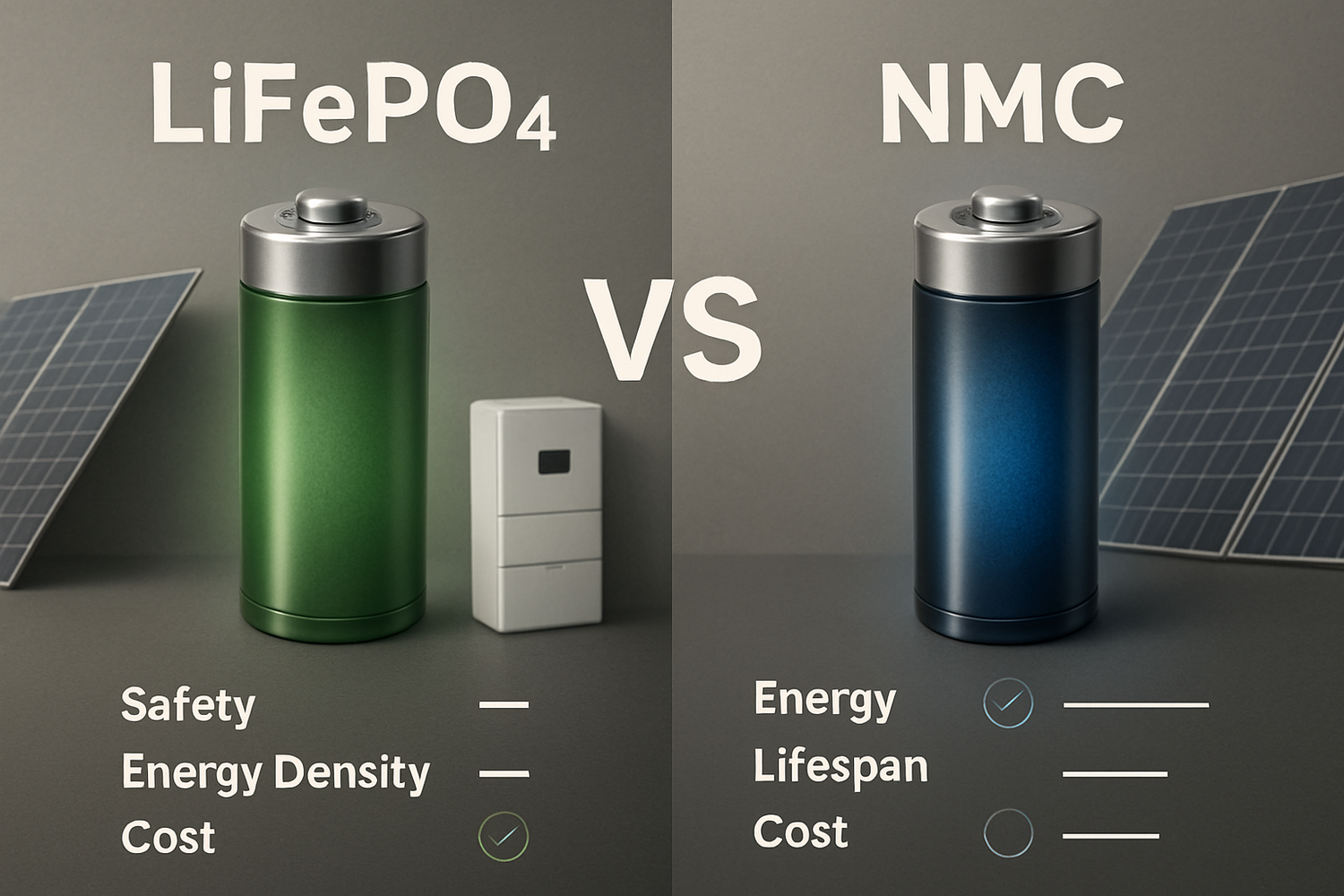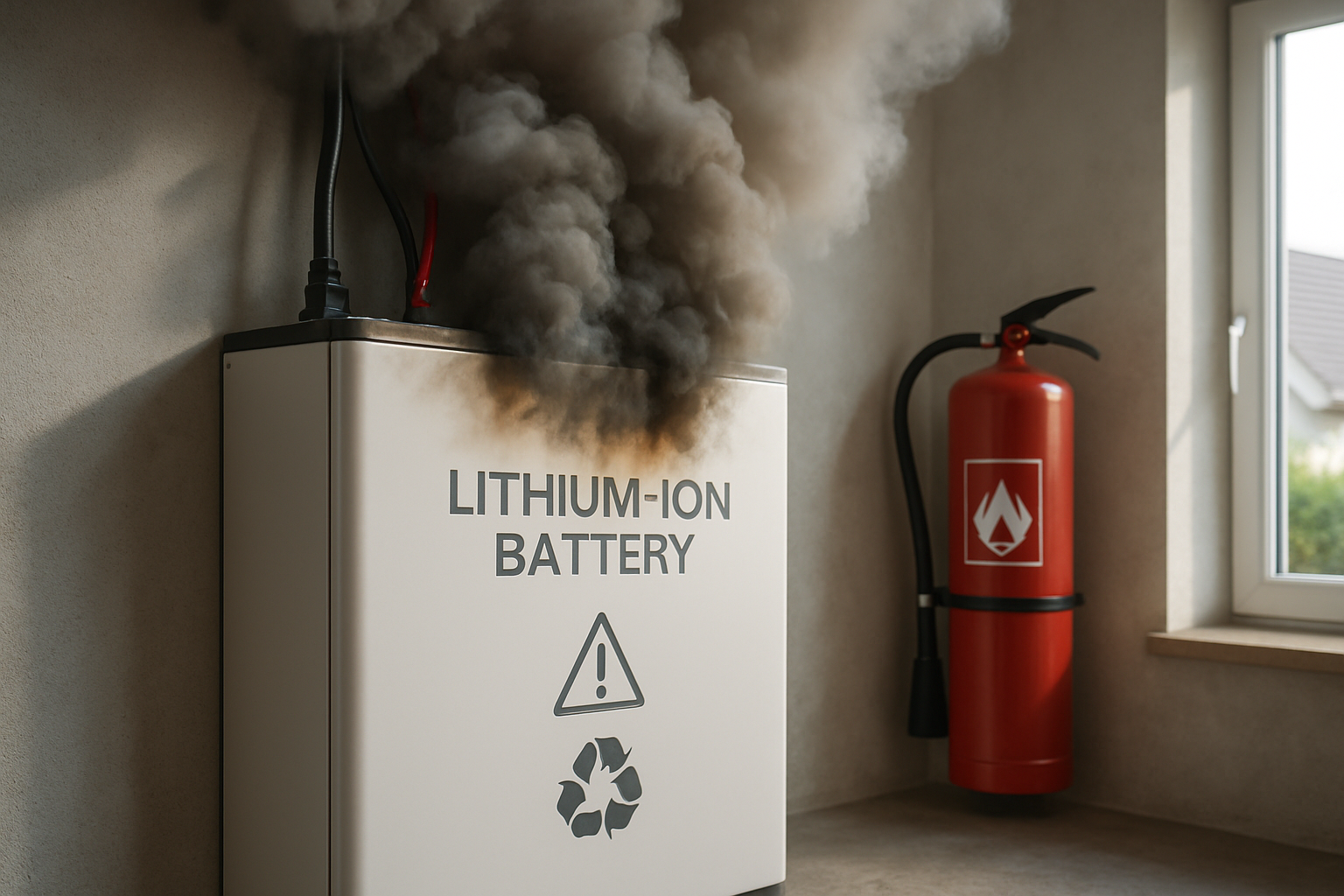As more homeowners embrace energy independence, battery energy storage systems become a pivotal component of modern residences. These systems allow you to store surplus solar power for use during peak demand or nighttime hours, enhancing grid stability and reducing electricity bills. The heart of any battery storage system lies in its chemistry, with Lithium Iron Phosphate (LiFePO4 or LFP) and Nickel Manganese Cobalt (NMC) being two prominent choices. Understanding the safety characteristics of these chemistries is paramount for anyone considering a home energy solution.

Understanding Battery Chemistries for Home Use
The choice of battery chemistry significantly impacts a home energy storage system's performance, lifespan, and, critically, its safety profile. LiFePO4 and NMC batteries each possess distinct properties that make them suitable for different applications.
Lithium Iron Phosphate (LiFePO4 or LFP)
LFP batteries utilize iron and phosphate as their cathode materials. This composition provides an inherently stable chemical structure. LFP batteries are recognized for their robust thermal stability, which is a key factor in preventing thermal runaway events. Due to their safety and cost advantages, LFP batteries are increasingly favored for utility-scale energy storage applications. Furthermore, LFP cells typically offer a longer cycle life and can be a more cost-effective option over the lifespan of the system.
Nickel Manganese Cobalt (NMC)
NMC batteries, as their name suggests, use a combination of nickel, manganese, and cobalt in their cathode. This chemistry allows for higher energy density, meaning more energy can be stored in a smaller, lighter package. NMC batteries have been a dominant choice for electric vehicles due to their energy and power density. For home energy storage, NMC batteries are often found in compact, wall-mounted systems where space is a premium concern.
A Closer Look at Safety: LiFePO4 vs. NMC
When selecting a battery for home energy storage, safety is a primary consideration. The chemical stability of the battery plays a significant role in its overall safety profile, particularly concerning the risk of thermal runaway.
Thermal Stability and Fire Risk
Thermal runaway is a critical safety concern for lithium-ion batteries. It occurs when an internal or external factor causes the battery cell to heat up uncontrollably, potentially leading to fire. LiFePO4 batteries exhibit superior thermal stability compared to NMC chemistries. The iron-phosphate bond in LFP is stronger, making it less prone to breaking down and releasing oxygen at high temperatures. This inherent chemical stability contributes to LFP being considered a safer option.
In contrast, NMC batteries, while highly energy-dense, can be more susceptible to thermal runaway if not properly managed. The higher energy density can translate to more energy released during a thermal event. Advanced Battery Management Systems (BMS) are crucial for both chemistries, constantly monitoring temperature, voltage, and current to prevent unsafe conditions. However, the fundamental chemical composition of LFP offers an additional layer of safety.
Real-World Safety Implications for Residences
For residential applications, the emphasis on safety is paramount. Any potential risk of fire or hazardous events within a home environment must be minimized. Urban fire safety codes are an important consideration in battery system installation. The robust thermal characteristics of LiFePO4 batteries provide homeowners with greater peace of mind, aligning with the need for highly reliable and safe energy solutions for the home.
Performance and Practical Aspects for Homeowners
Beyond safety, practical considerations such as energy density, cycle life, and overall cost-effectiveness influence the choice of battery chemistry for home energy storage.
Energy Density and Space Requirements
NMC batteries offer higher energy density, allowing them to pack more power into a smaller volume. This attribute makes them suitable for applications where space is limited, such as wall-mounted residential batteries. If your installation space is very constrained, NMC might appear advantageous from a size perspective. However, LiFePO4 batteries, while typically larger for the same energy capacity, prioritize cost and safety, which are often the primary concerns for stationary energy storage.
Cycle Life and Longevity
Battery cycle life refers to the number of charge and discharge cycles a battery can undergo before its capacity significantly degrades. LiFePO4 batteries generally boast a longer cycle life than NMC batteries. This extended lifespan means your battery system can provide reliable service for more years, potentially reducing the need for early replacement and offering greater long-term value.
Cost-Effectiveness Over Time
While the initial purchase cost can vary, considering the total cost of ownership over the battery's lifespan is crucial. LFP batteries are often more affordable upfront and, combined with their longer cycle life and enhanced safety features, can offer superior long-term cost-effectiveness. Investment in battery storage has seen significant growth, with expenditure exceeding $20 billion in 2022, primarily driven by investments in the United States, China, and Europe.
| Feature | LiFePO4 (LFP) | NMC |
|---|---|---|
| Thermal Stability (Safety) | Excellent (Inherently safer chemical composition) | Good (Higher thermal sensitivity, relies more on BMS) |
| Energy Density | Moderate | High (More energy in a smaller footprint) |
| Cycle Life | Longer (Typically 6,000+ cycles) | Shorter (Typically 2,000-4,000 cycles) |
| Cost | Lower initial cost, lower cost per kWh over lifespan | Higher initial cost |
| Primary Application Focus | Utility-scale storage, home storage (safety/longevity focus) | Electric vehicles, compact home storage (energy density focus) |
Selecting the Ideal Battery for Your Home
Making an informed decision about your home energy storage system involves weighing various factors. Your priorities will guide the best choice for your specific circumstances.
If safety and long-term reliability are your top concerns for a residential battery system, LiFePO4 chemistry presents a compelling option. Its robust thermal stability provides a significant advantage for home installations. For homeowners with extremely limited space who prioritize a compact footprint above all else, NMC batteries might be considered, though rigorous safety protocols and a sophisticated Battery Management System are even more critical. Ultimately, a well-designed home energy storage system integrates high-performance lithium batteries with efficient hybrid inverters and solar panels to create a seamless and dependable power supply.
Empowering Your Energy Independence
The journey towards energy independence for your home is an important step. Selecting the right battery chemistry is a foundational decision that impacts the safety, efficiency, and longevity of your entire system. While both LiFePO4 and NMC batteries offer distinct benefits, the inherent safety and extended lifespan of LiFePO4 make it a preferred choice for many residential energy storage applications. Your home deserves a reliable and scalable energy solution, designed to provide consistent power and peace of mind for years to come.





Leave a comment
All comments are moderated before being published.
This site is protected by hCaptcha and the hCaptcha Privacy Policy and Terms of Service apply.